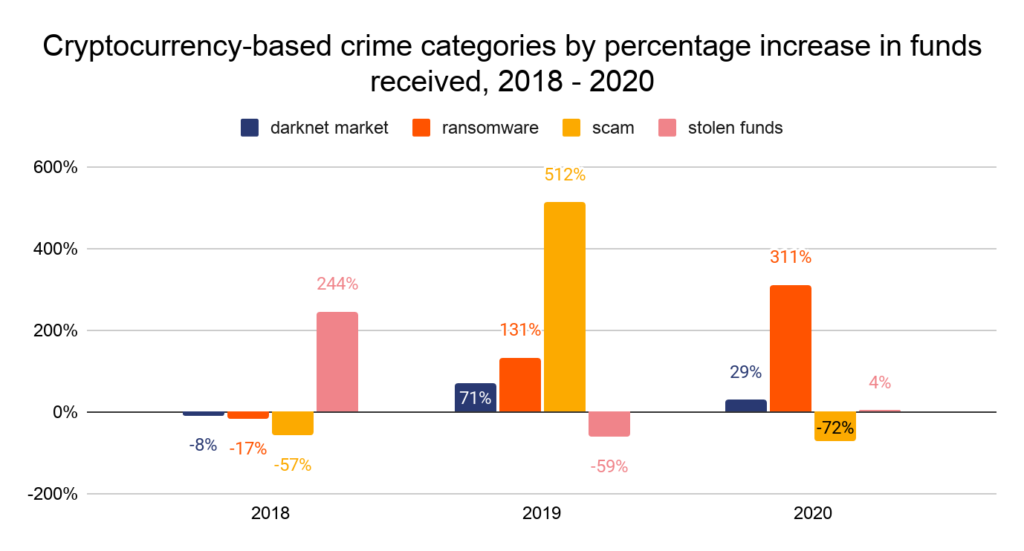
2020 wasn’t just the year of the Covid-19 pandemic, but also the year of crypto as Bitcoin went to establish new records as institutional investors got in the game.
Nevertheless, crypto is also a big magnet for criminals as you can use pseudonyms and send funds anywhere in the world right away, even with a design that is meant to be transparent and traceable. The good news in all of that? Crypto crime spiraled down in 2020.
In 2019, from the total crypto transaction volume, 2.1% was used for criminal activity – that means $21.4 billion worth of transfers. In 2020, on the other hand, criminal activity accounted for only 0.34% of those transactions, which is $10 billion in transaction volume.
One reason why criminal activity decreased is due to the overall economic activity tripling between 2019 and 2020. Not only does crypto-crime fall in percentage and numbers, but it also continues to represent a small part of transactions overall.
Top Crimes of 2020
The graph above indicates the types of crimes that have received the most crypto funds between 2017 and 2020. This one aims to track only the cryptocurrency that is received, normally associated with criminal revenue, and not the cryptocurrency that is sent from criminal addresses, which tends to be associated with money laundering.
As it happened in 2019, scams are the biggest crypto-related crimes – they represent 54% of all illegal activity. This means about $2.6 billion worth of cryptocurrency. The good news is that the share of scams has dropped from 2019 while 2020 also didn’t record any huge scams, such as the famous PlusToken Ponzi scheme, which robbed millions of people of $2 billion.
The darknet market continues to be the second-largest crime category, representing $1.7 billion worth of crypto-activity, which is more than the $1.3 billion recorded in 2019.
But the thing that has drawn our attention is how big ransomware became in 2020. It doesn’t necessarily represent a huge percentage overall since it only makes up 7% of all funds that criminal addresses have received. That means less than $350 million, which is not quite as impressive as the other numbers.
What is impressive, though, is that that figure means there was a 311% increase since 2019. No other crypto-crime has grown so much in 2020, probably since many people started working remotely, leaving the unprepared companies more vulnerable.
Furthermore, the ransomware estimates are also underreported, which means that as 2021 goes along, we will discover more cases that took place in 2020, especially during the last months of that year.
Numbers aside, it is worth noting that ransomware is destructive in its own special way since such attacks can affect business and governments for weeks – even several hospitals fell victim to it, all while battling a pandemic.
Overall, some experts seem to agree that ransomware represents about $20 billion in economic losses for the last year. 2020 really insists on being the year we don’t want to remember.










